Categories
- Argentina
- Chile
- Antarctica
- Easter Island
- Falklands (Malvinas)
- Bolivia
- Peru
- Uruguay
- Paraguay
- Brazil
- Venezuela
- Colombia
- Ecuador
- Galapagos
- Panama
- Costa Rica
- Cuba
- Nicaragua
- Honduras
- El Salvador
- Guatemala
- Belize
- Mexico
- Latin American Xmas
Pages
- Map of South America
- Home Page
- First week in Latin America – October 2009
- Map of Central America
- Contact Us
- The Jesuit Missions in South America
- A week in Buenos Aires
- Street Art of Buenos Aires
Archives
- October 2011 (3)
- September 2011 (9)
- August 2011 (10)
- July 2011 (7)
- June 2011 (6)
- May 2011 (11)
- April 2011 (10)
- March 2011 (4)
- February 2011 (5)
- January 2011 (6)
- December 2010 (6)
- November 2010 (4)
- October 2010 (8)
- September 2010 (5)
- August 2010 (7)
- July 2010 (5)
- June 2010 (6)
- May 2010 (6)
- April 2010 (7)
- March 2010 (6)
- February 2010 (9)
- January 2010 (4)
- December 2009 (8)
- November 2009 (5)
- October 2009 (2)
Belize Coast
08th June 2011
From the cool Guatemala highlands we flew to hot, humid Belize on the Caribbean. Once a British colony (and a haven for English pirates), Belize is a primarily English speaking country. The Maya were the first inhabitants and together with an interesting mix of Creoles (African/European), Mestizos (Spanish/Maya) and Garifuna (African/Caribbean) plus a few Chinese, Indians and Mennonites make it quite a different country to the rest of Central America.
.
We spent a night in Belize City [1] before catching the water taxi to Caye Caulker [2], a super laid back island 3 blocks wide and 3 kilometres long with sandy streets and only a few cars.
.
Belize has the world´s second largest barrier reef dotted with some 200 islands or cays. We took a 3 day trip on the 40 foot gaff rigged, traditional Belizean wooden sailing boat, Ragga King, heading south from Caye Caulker to Placencia [5], reggae music blaring. There were 11 of us tourists, plus 2 crew on board. Patrick, the skipper, was an expert spear fisherman while the first mate and cook Shane kept us amused with his antics and singing. Sailing between islands through aqua blue water, we stopped every couple of hours to snorkel on shallow patches of reef. Under water was a different world – beautiful corals and fish we´ve not seen before. We were thrilled to see a manatee glide by. The first night we pitched our tents on the deserted Rendezvous Caye [3] a tiny sand patch with 5 coconut trees, the second night on sandy Tobacco Caye [4]. Dinner was the fish caught each day washed down with a few rum punches whilst sitting around a campfire.
.
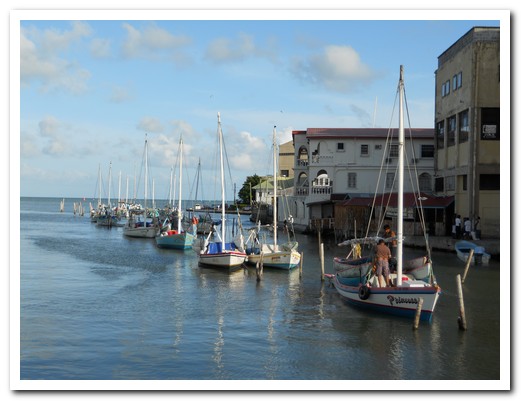
Belize City harbour
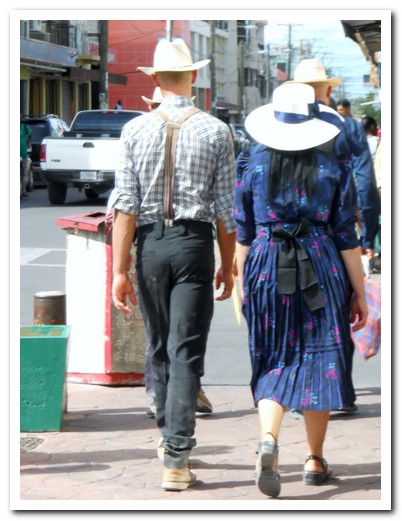
Mennonites come to town
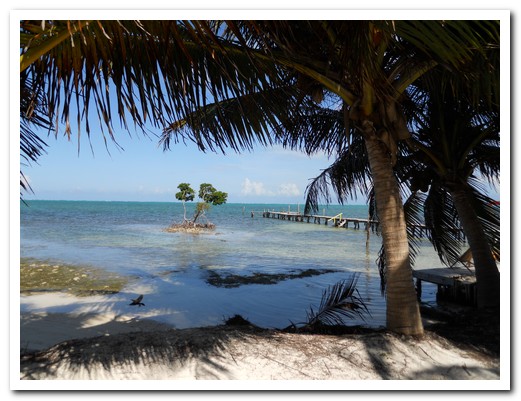
Caye Caulker
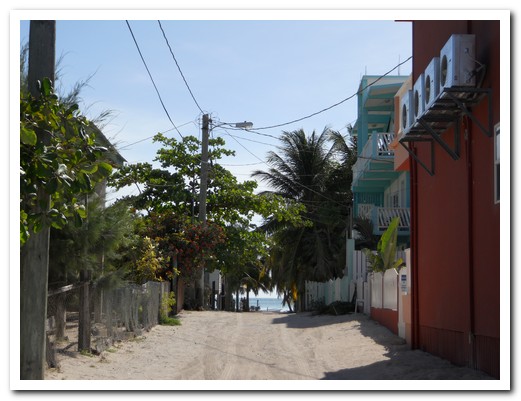
Sandy streets on Caye Caulker

Food cart on the beach

Typical wooden house
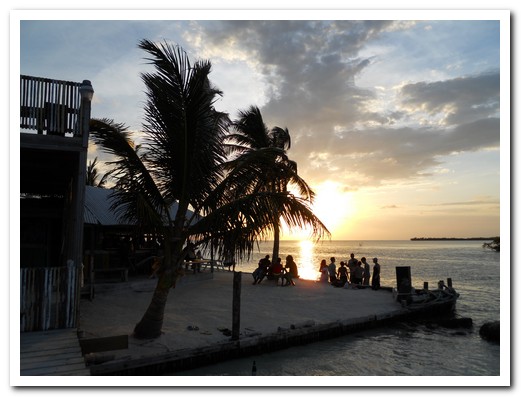
The Lazy Lizard bar at sunset
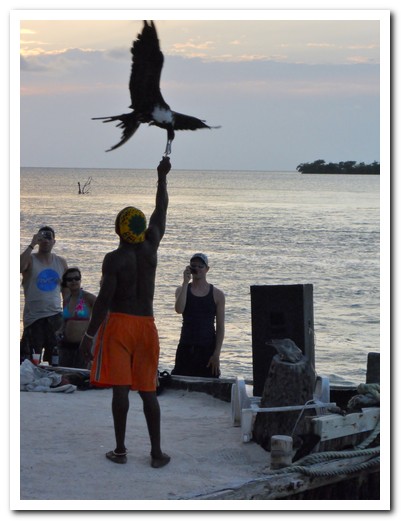
Hand feeding the frigate birds
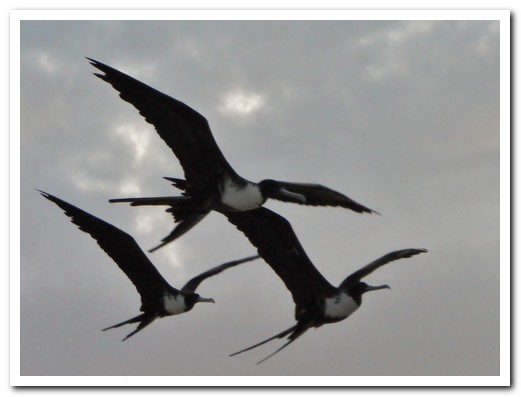
Frigate birds hang around where fish are being cleaned
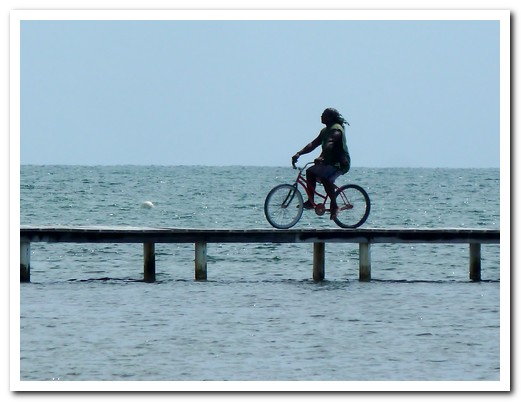
One of the locals riding along the wharf
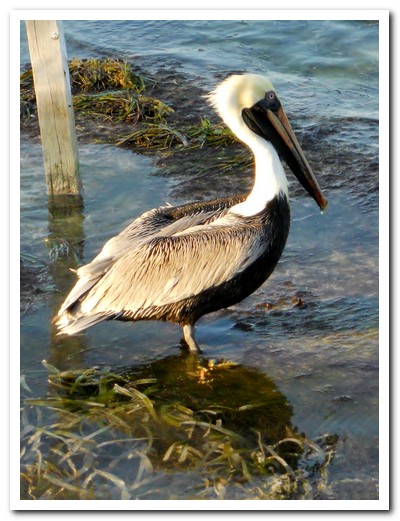
Pelican

Manatee comes up for a breath of air

Manatee feeding on the sea grass
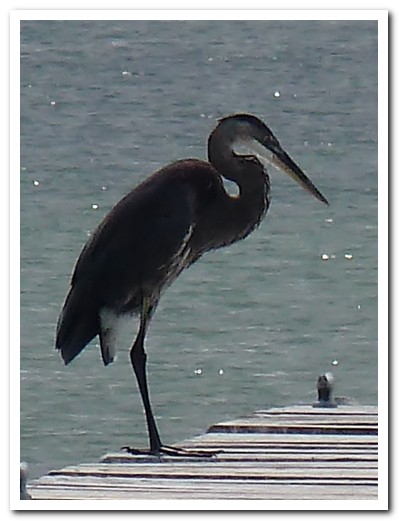
Large heron

Small stingray
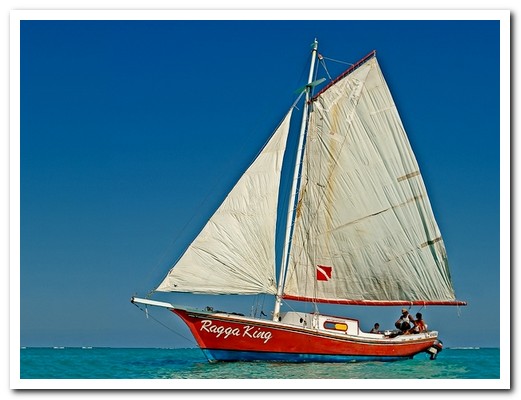
We joined the Ragga King for a 3 day trip along the reef
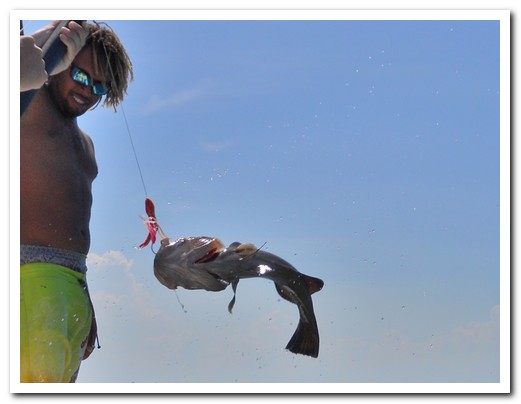
It wasn´t long before the first fish was hauled in
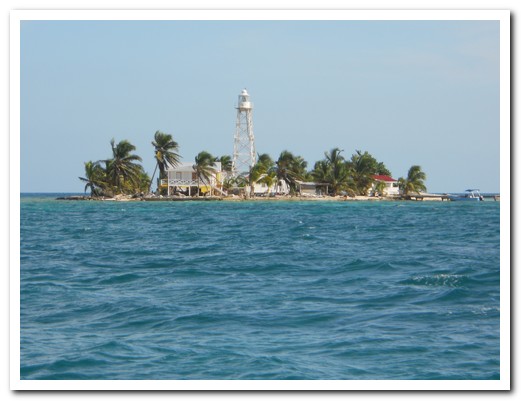
Lighthouse on an isolated island
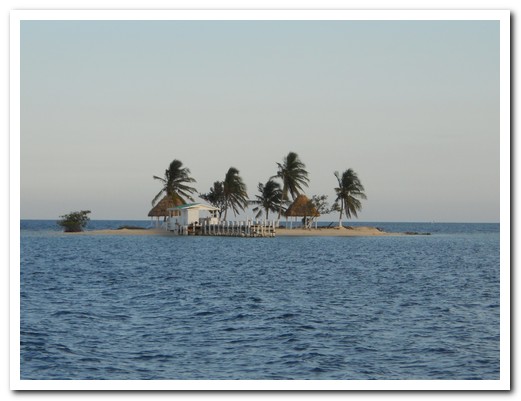
Rendezvous Island, our first night stop
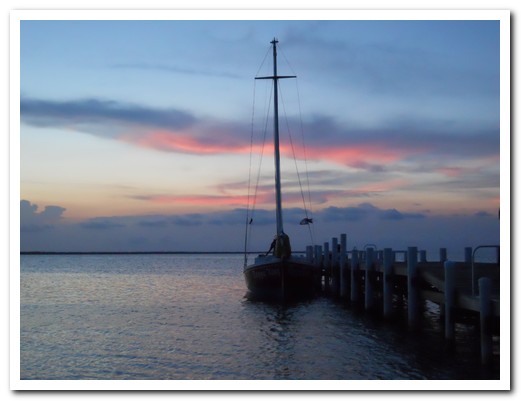
Sunset

Sitting around the campfire with rum punches

Seagull

Captain Patrick speared a bunch of fish for dinner

Tobacco Caye, our second night stop
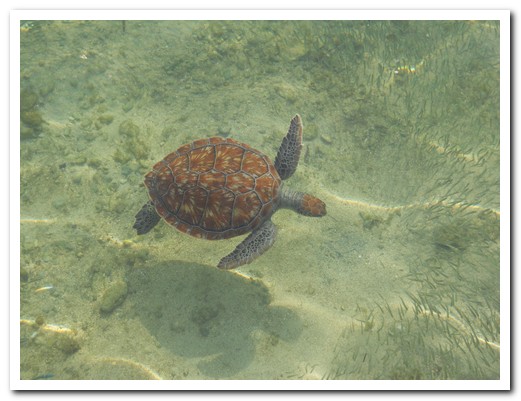
Green sea turtle comes for a feed every afternoon
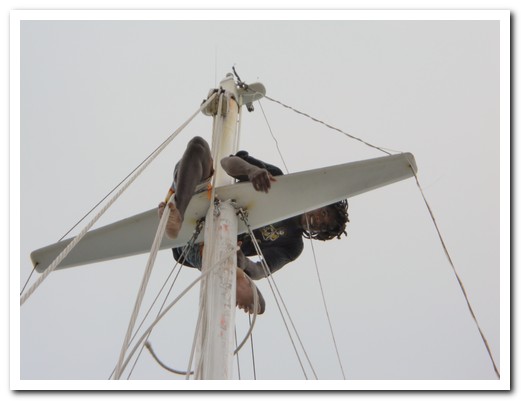
Shane up the mast
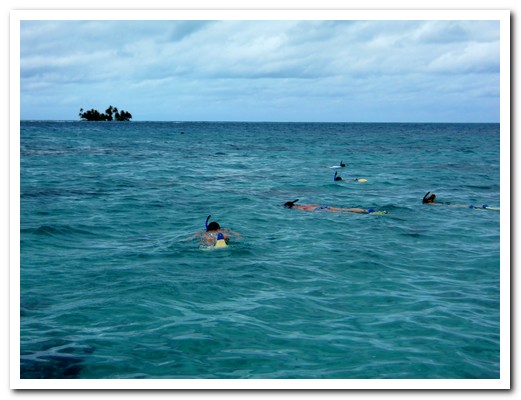
Snorkelling on the reef
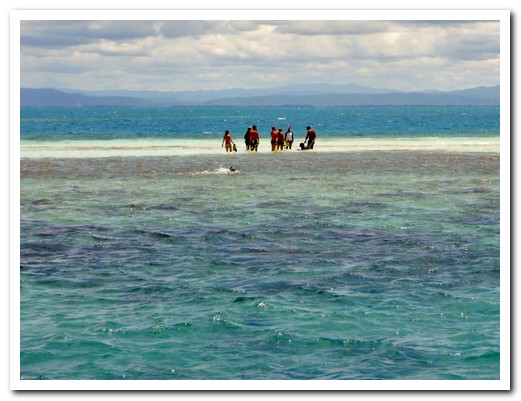
Resting on a sand bar
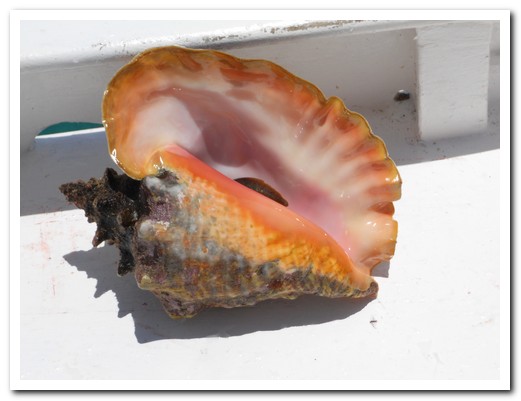
Conc is a popular with the islanders
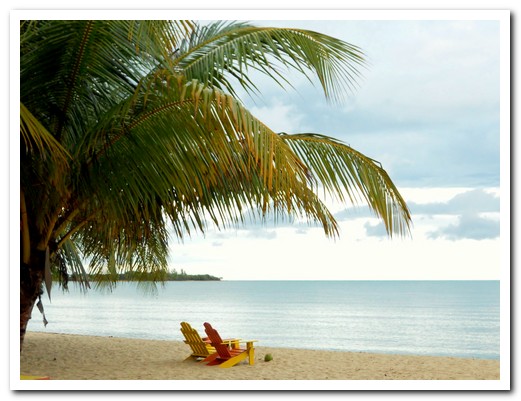
The relaxed Placencia at the end of our trip
Mayan Belize
12th June 2011
Leaving the coast behind we headed inland to San Ignacio [6] for the Maya ruins of Caracol. With experienced guide Elias Cambranes of K’Atun Ahaw Tours we were able to understand more about the earliest inhabitants. It is believed that more than 1 million Maya once lived in what is now Belize (present population 321,000). Extensive ruins can be found right across the country.
.
Caracol was once one of the largest city states. The centre piece of the site is the 43 metre high structure known as Caana (Sky Palace) topped with 3 temples. There is a great view of the rest of the site from the top.
.
Caves, representing the underworld were important to the Maya. Rituals and human sacrifice was performed deep inside. A tour of Actun Tunichil Muknal (ATM) Cave was certainly an adventure. We swam into the dark mouth of the cave then slowly scrambled over rocks, waded through water and squeezed through narrow spaces some 800 metres into the 5 kilometre long cave. We then left the water by climbing up the rocky wall to reach a large chamber filled with spectacular stalagmites and stalactites. The floor was littered with pottery vessels placed there over 1 thousand years ago as well as human remains. Everything lies where it did when the Mayas left – nothing has been removed. The most interesting was a complete calcified skeleton of a woman (the crystal maiden) tucked away in small cavern.
.
Further north from the town of Orange Walk [7] we travelled by boat down the New River to the Maya site of Lamanai (Submerged Crocodile). Jungle overhanging the river banks was reflected in the inky black water, crocodiles were sunning themselves on tree trunks, a spider monkey swung through the trees following the boat and water birds were everywhere. Lamanai was one of the largest and longest inhabited ceremonial centres in Belize.
.
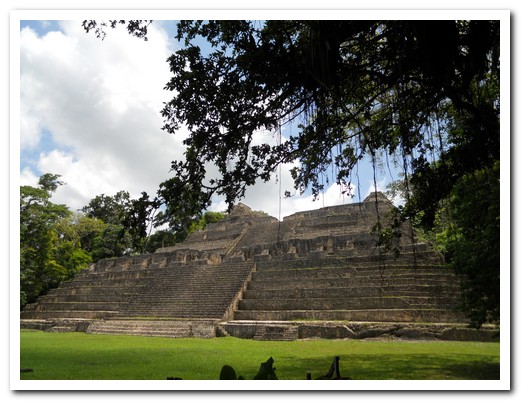
Caana, the main temple at Caracol, is the largest building in Belize
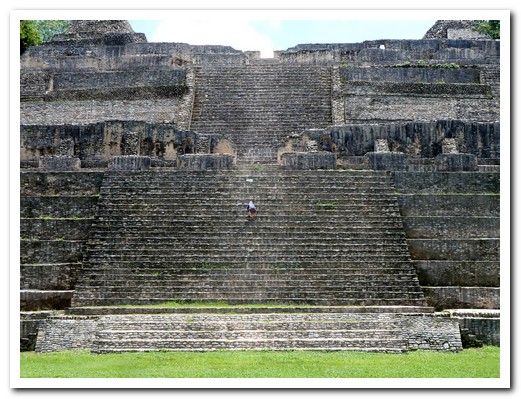
Pam climbing the 43 meters to the top
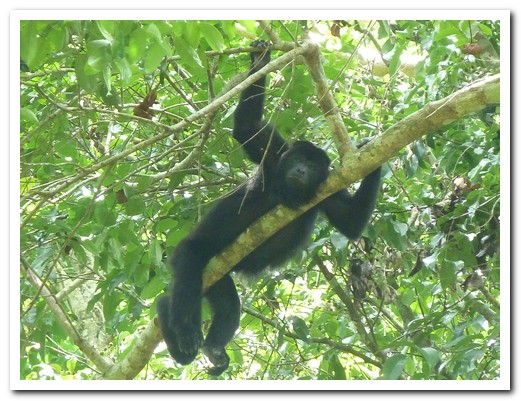
Black howler monkeys in the park

One of the temple on top of Caana
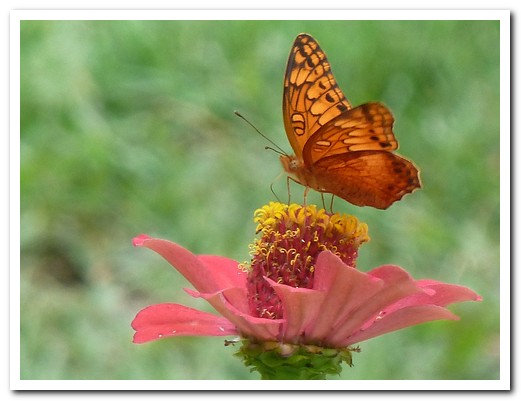
Beautiful butterfly

Jeff is almost there – great view of a pyramid behind
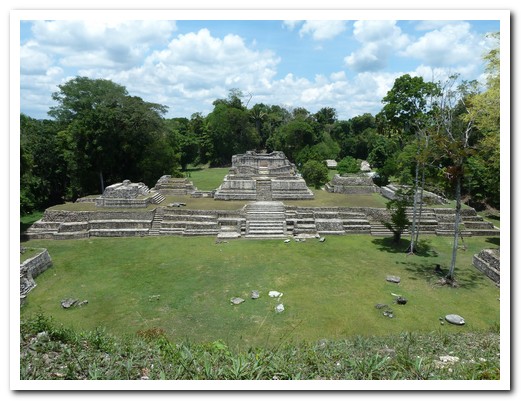
The Mayan observatory shows the equinox alignments
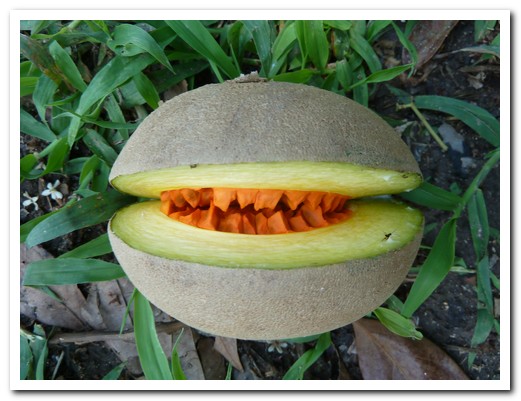
Monkeys love this fruit
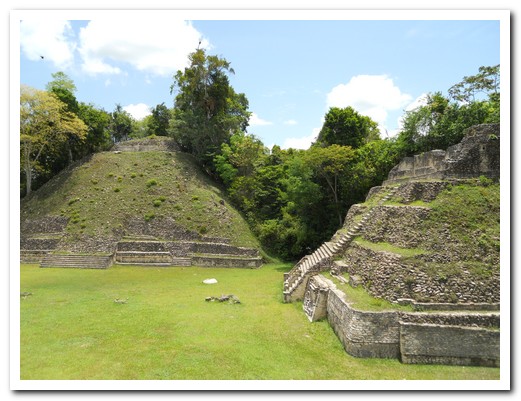
Other ruins
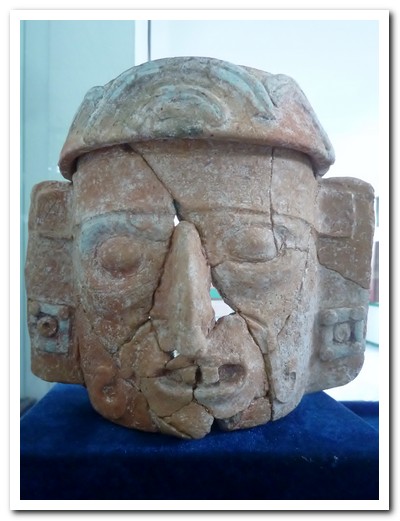
Ceramic jar used for offerings
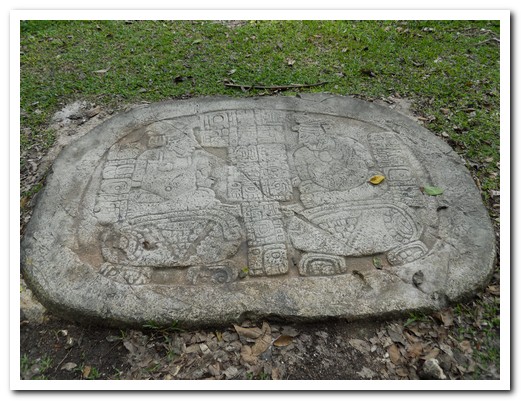
Altar
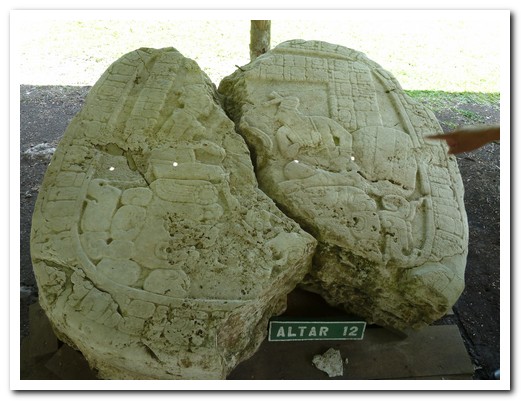
Altar
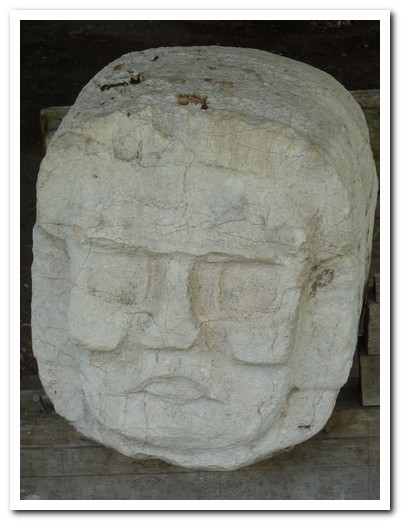
Carving of a head
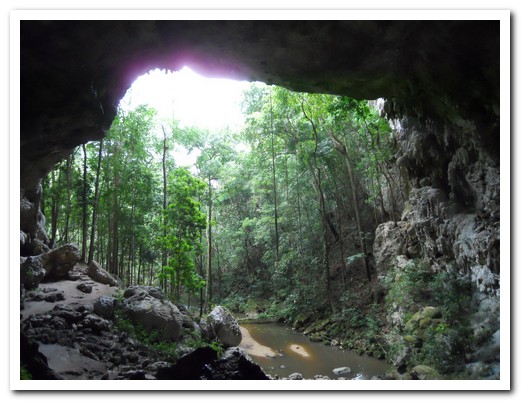
Entrance to the Rio Frio (Cold River) Cave

Exit to the Rio Frio Cave
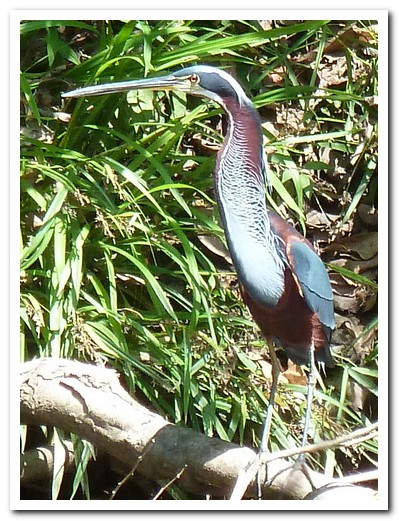
Heron
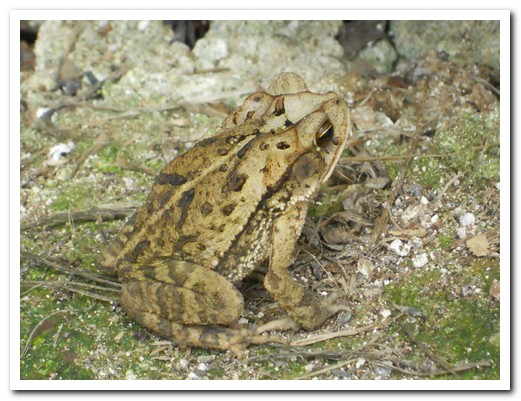
Frogs were out – the rains are coming
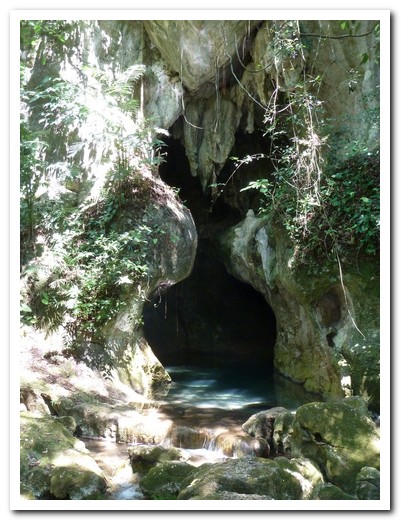
We swam in through the entrance of the ATM Cave
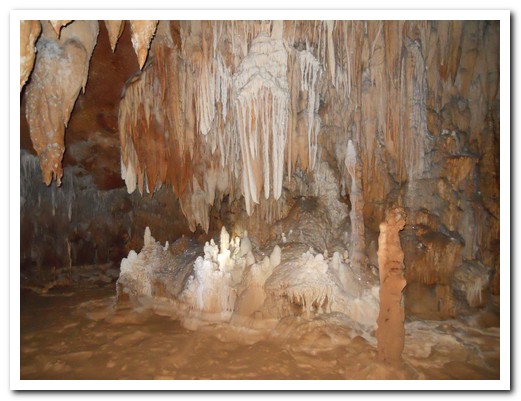
Inside the cave dry chamber ….
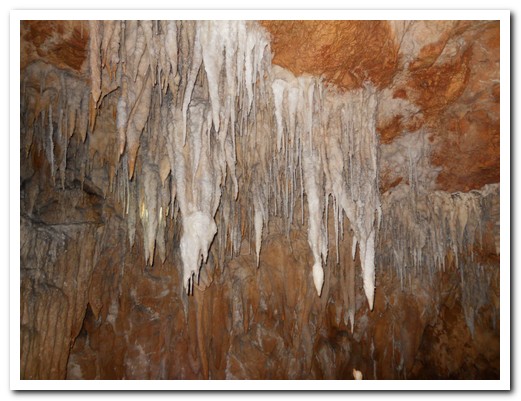
… are beautiful formations
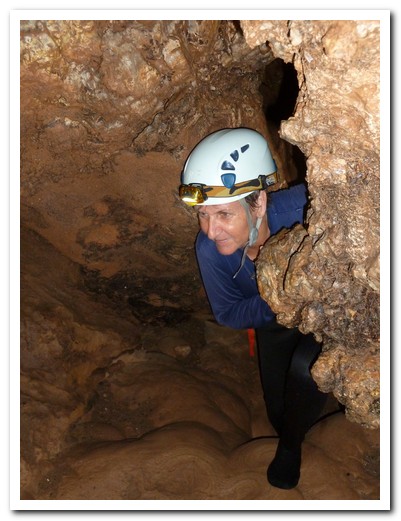
Pam squeezing through a hole – she really did go inside a cave!
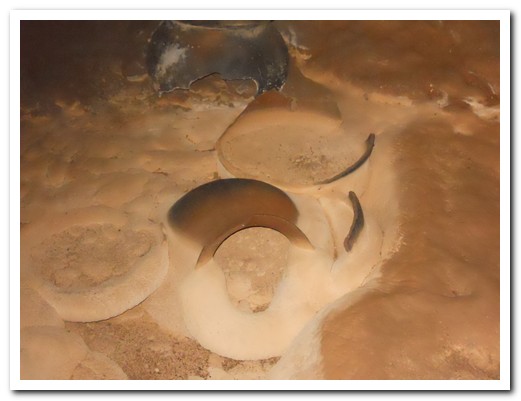
Pottery calcified from years in the cave
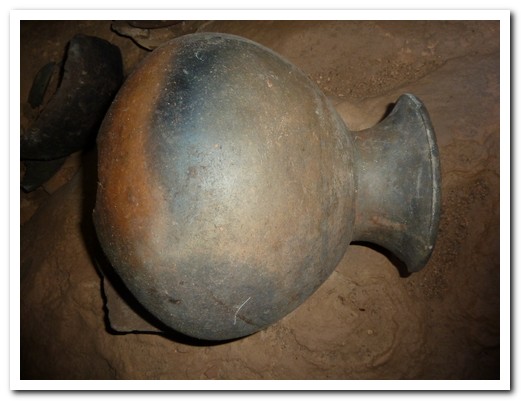
Ceramic urn lying on its side with …
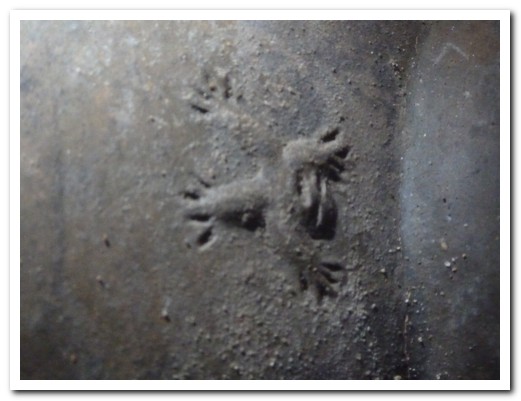
… a small trademark
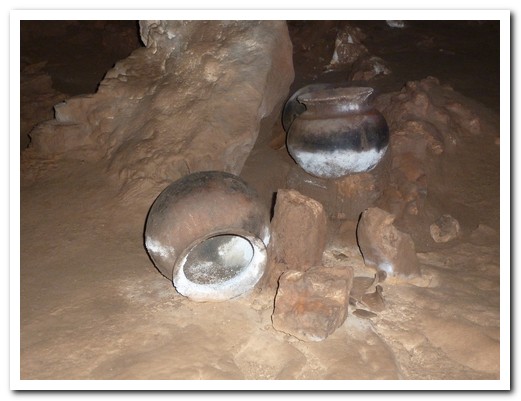
Pots in an ancient fireplace
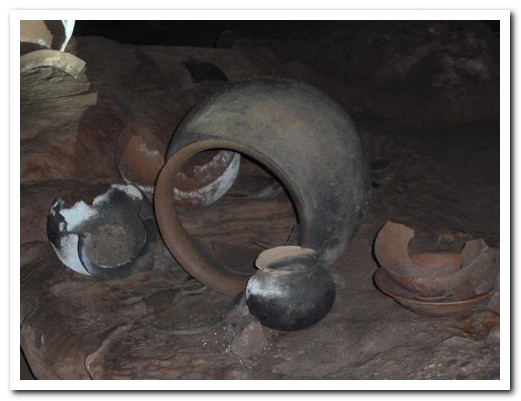
Pots were broken as part of a Mayan ceremony
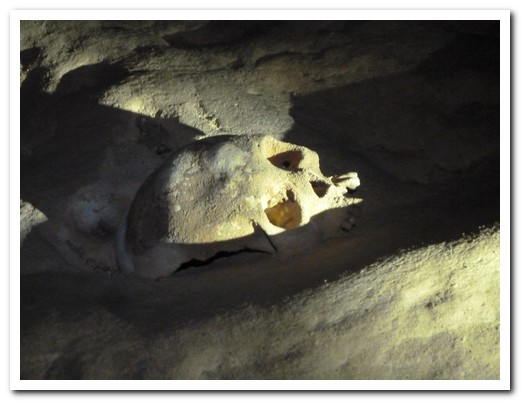
Skull shows signs of deliberate deformation
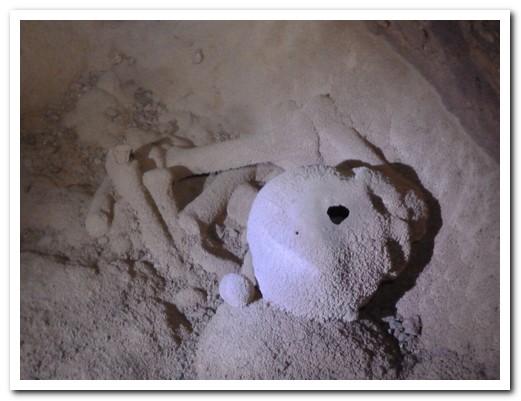
Bones from a human sacrifice, note the hole in the skull
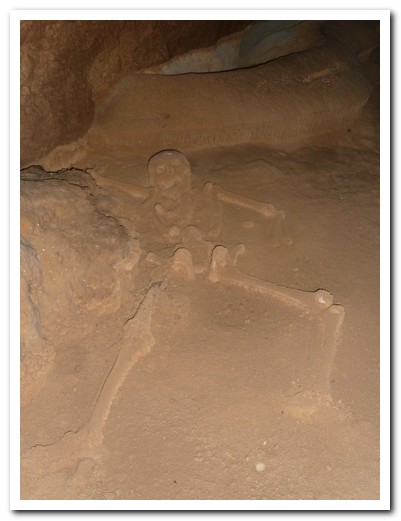
The crystal maiden, calcified to the cave floor, was the highlight
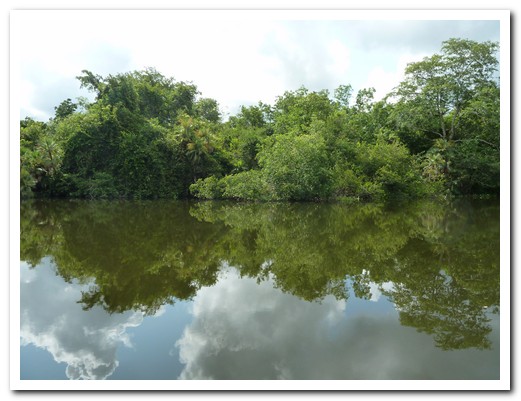
The New River from Orange Walk to Lamanai
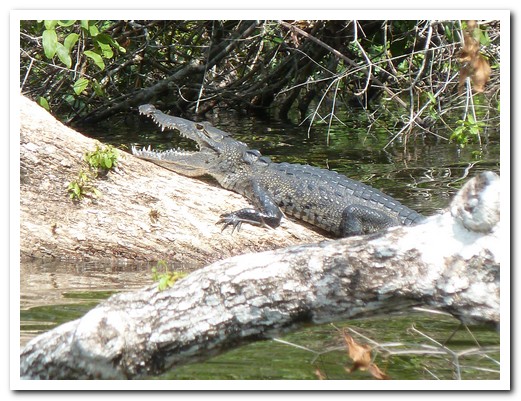
Crocodile sunning itself

Waterlillies
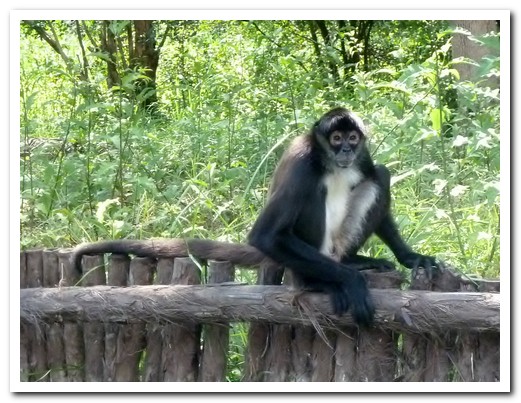
Spider monkey
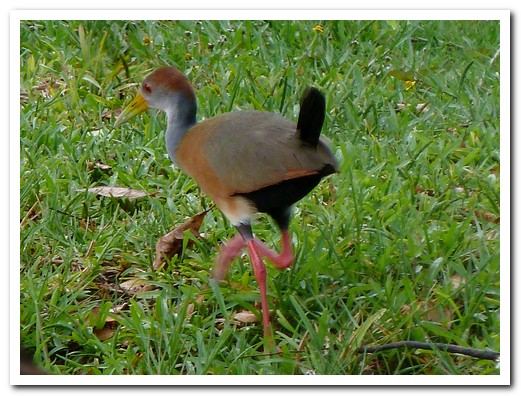
Grey breasted wood rail
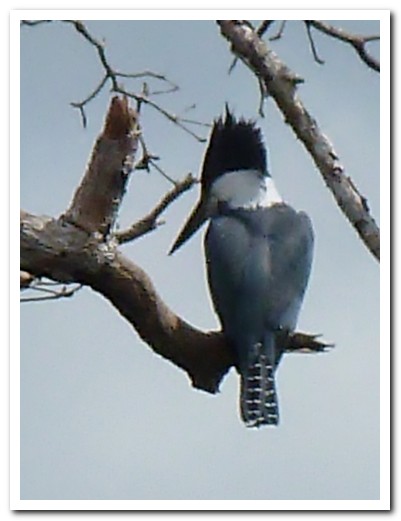
Kingfisher

Tiny bats
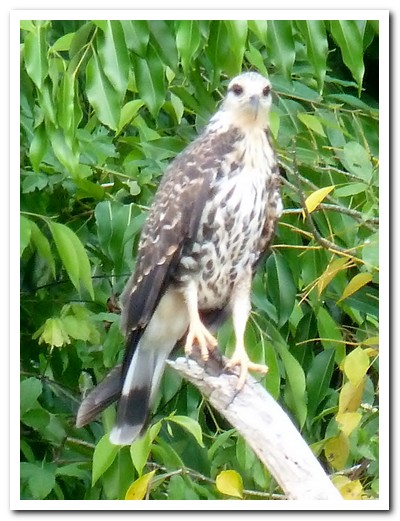
Snail kite
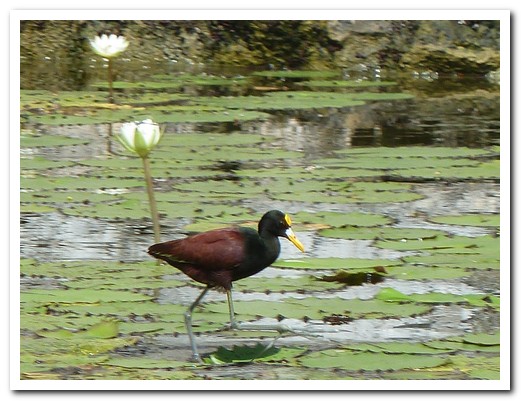
Jacana
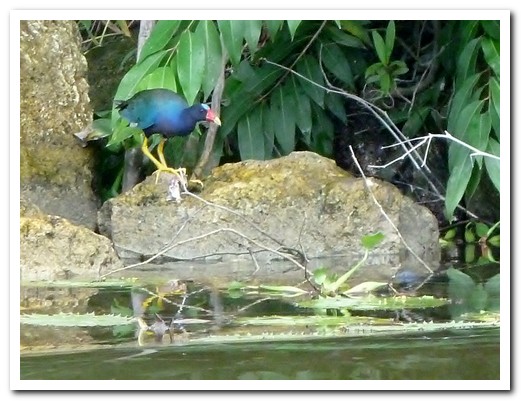
Water bird
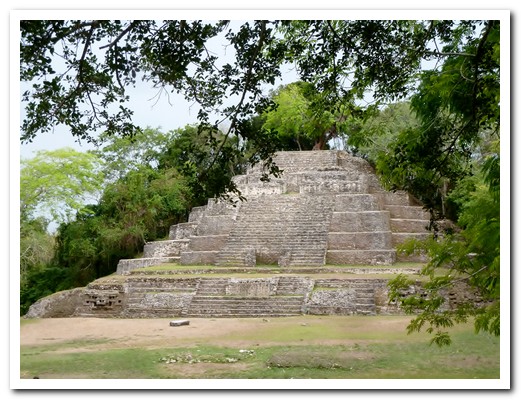
Jaguar Temple at Lamanai
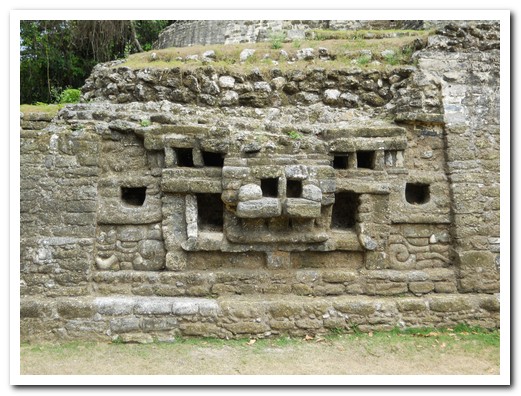
Jaguar on the Temple
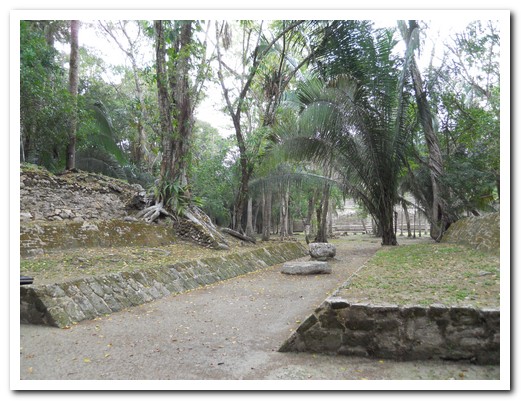
Ball court, the winner gets sacrificed
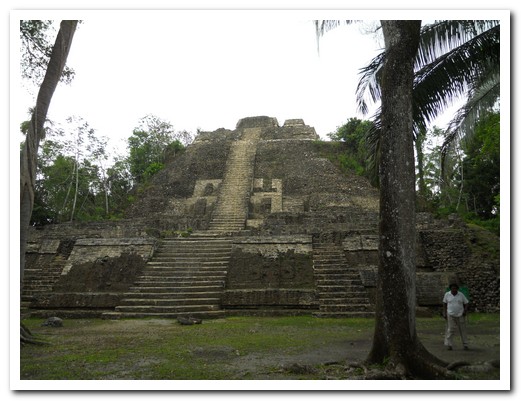
High Temple (33 metres tall)
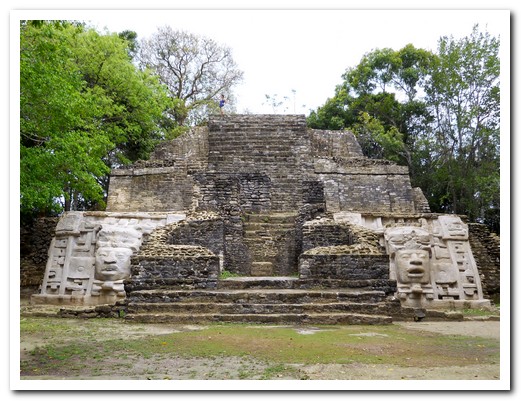
Mask Temple
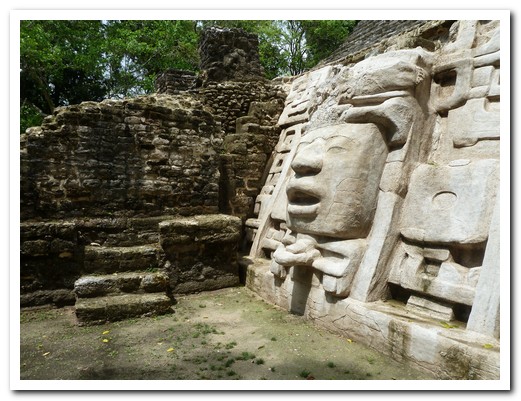
Masks – over 2 metres high, the biggest in the Maya world
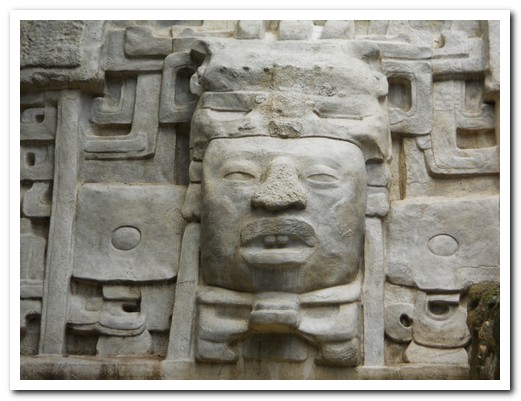
Masks show Olmec characteristics